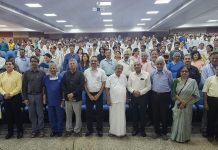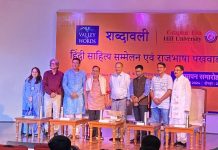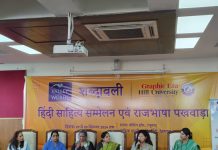In his address to the third iteration of the Voice of Global South summit on August 17, 2024, PM Modi remarked “Countries of global south must unite and speak in one voice…we need to get 2/3rd of world’s population recognised…” This clarion call by New Delhi to the global south reinforces India’s long-standing commitment to bolstering erstwhile colonial nations. The initial two editions of the summit witnessed enthusiastic participation from over 100 countries of the global south, manifesting the trust of the global south in Indian stewardship. During India’s G-20 presidency, the African Union was enlisted into the heavy-weight alliance, which altered the aristocratic character of G-20, and it exemplified New Delhi’s pervasive influence in the grouping of the 20 most dominant counties.
Global South encompasses a disparate array of underdeveloped countries, comprising Africa, Latin America and the Caribbean, Asia(excluding Israel, Japan and South Korea) and Oceania(barring Australia and New Zealand).
Most of these countries have borne the brunt of colonisation in the 19th and 20th centuries. American political Activist Carl Oglesby is believed to have conceived the term Global South in 1969 in Commonweal to denote a set of countries beset by the dominance of the Global North is due to political and economic subjugation. However, Gramsci’s allusion to domination over Southern Italy by capitalists of Northern Italy in his 1926 essay entitled “The Southern Question” is argued to be a precursor to Oglesby’s mature conceptualisation of the global south. Carl’s work was an offshoot of the intellectual traditions of the first half of the 20th century, such as that of Lenin, Hobson, Dependency theory etc. which advanced that the global order was created by a cohort of wealthy and politically influential nations. Some criticism of the term stems from its literal interpretation, which suggests that it embodies countries falling below the line of the equator, with critics flagging that India, a key player of the global south is located to the north of the equator while affluent Australia and New Zealand are located below the equator. Indian foreign policy strategist, C. Raja Mohan draws exception to the phrase by arguing that it “denies agency to individual countries by treating them as one bloc” with “fluid boundaries and vague criteria of inclusion.”
COLONISATION IN 20th Century
The third-world countries (presently, Global South) in the Cold War era began to coalesce around the two-fold agenda of truly exercising the right to self-determination by pursuing geo- political non-alignment and pre-empting economic colonisation of the newly born free nations. To further these motives, the countries of the Global South contrived two transnational vehicles, viz., NAM (Non-Aligned Movement) and G-77(Group of 77).
NAM sprang from the Bandung Conference or Asian-African Conference hosted by Indonesia in 1955. A gathering of 29 countries at the conference interalia, India and China assented to the creation of a Non-Aligned movement to uphold the geo-political interests of the developing world. NAM convened its maiden summit Conference of Heads of State/Government in Belgrade in 1961 to give effect to the official inception of NAM in addition to promulgating the need to “transition from an old order based on domination to a new order based on cooperation between nations”. Nehru’s amicable equations with his compeers in the Global South proved seminal in exalting the comity of Non-Aligned nations.
In fact, NAM owes its nomenclatural genesis to India as the phrase ‘non-alignment’ was coined by Erstwhile Ambassador of India to the United Nations, V.K. Menon.
To shore up geopolitical non-alignment, leaders of the nascent global south attempted to rejig international economic dispensation through G-77, which 77 non-aligned countries devised at the first gathering of the United Nations Conference on Trade and Development in 1964 Geneva. G-77 aimed at augmenting the manufacturing capacity of the countries of global south so as to metamorphose these economies from exporter of raw materials to exporter of finished products. G- 77 sought to indemnify for the fiscal loss, wreaked by the colonisation of these newly emancipated countries.
However, all the means formulated for defanging the bipolar world turned out to be a debacle. The New International Economic Order(NIEO), mooted by the 1973 Algiers NAM Summit, which incorporated 20 principles for fuelling economic growth of global south succumbed to the debt crisis of the 1980s during which most developing economies landed in doldrums. The US, since the enunciation of NIEO, had vehemently thwarted NIEO by labelling it as radical and inspired by socialism. The debt crisis and the implosion of the Soviet Union coerced many countries to recourse to International Financial Institutions for eliciting access to much-needed liquidity. Post-Communist regimes beset by the disintegration of the USSR were administered Shock Therapy by the World Bank and the International Monetary Fund, which entailed their transformation from centrally planned economies to free economies. Even India deregulated its economy in 1991 in light of economic distress and adopted measures for liberalisation. The fall of the USSR and the conundrum of economic crisis culminated in the anointment of the United States as the world’s only superpower. In a nutshell, the decade of the 90s laid the foundation for the resurrection of capitalism and its allied institutions and drew curtains on the third world’s crusade against inequitable economic order.
21ST CE reinforced the independent stature of the global south as India and China started to outclass many Western economies, prominently from the 2000s. Emboldened Chinese and Indian economies started acting as a ready reckoner to the entire global south. It rendered them the alternative to circumvent the Western fiscal model and synchronise their economies with these countries to which the entire global south was well accustomed. However, China’s extraordinary belligerence did not augur well for many small nations, especially in Southeast Asia. China’s quantum leap in the industrial area was not in tandem with democratic tenets, unlike India. Though the Chinese industrial sector surpassed its many Western counterparts, it is worth mentioning that it did not translate into friendly relations in its neighbourhood owing to its extractive character. China’s outlook towards Asia is well articulated by a Chinese idiom which says “One mountain cannot have two tigers”. China’s foreign philosophy is not poised to accept a multipolar Asia so, the Chinese construe India’s rise in the Asian geopolitical landscape as a menace to China’s pre-eminence in the region and beyond.
EXPLORING INDIA AS A GUIDE TO GLOBAL SOUTH
In sharp contrast, India’s unimpeachable democratic credentials since Independence, which are unprecedented vis- à-vis any other post-colonial nation place India at the helm of inclusive global south. Given the magnitude of diversity and poverty that India harboured on the verge of Independence, many thinkers and even the British were cynical about the success of democracy in the Indian setting. Pranab Mukherjee, former President of India and a distinguished statesman, mentioned during his intellectual engagement with children, that once Sir Anthony Eden, who was a British Foreign Secretary and went on to become British Prime Minister, expressed to Nehru through correspondence that his dream of introducing a parliamentary form of government in India was unrealistic and impractical, however after 1952, the same individual, who happened to be Nehru’s old pal of Trinity College of Cambridge University reconsidered his opinion and wrote a letter to Nehru stating “Indian Constitution is the most magnificent Magna Carta of Socio-Economic transformation of a vast multitude of people in a peaceful manner.” India’s ascent in all spheres of international theatre serves as a case study for nations of the global south. India’s pathway post-independence vindicates that democracy leads to inclusive development in place of stagnation.
India’s civilisational connection with many South Asian countries transcends political frontiers and temporal dimensions.
Cultural ties inextricably bind many nations such as Nepal, Sri Lanka, Indonesia, Cambodia etc. to the civilisational spirit of India. The idea of Vasudhaiva Kutumbkam or the world is one family, as enshrined by the Maha Upanishad and the Rig Veda, is a succinct proclamation of Ancient India’s prelude to global citizenship long before it was propounded in the Western philosophical realm. Even thinkers of Ancient India, when the world placed the accent on territorial conquest and survival, envisaged this world to act as a cohesive family. For instance, a major chunk of Nepalese and Indians bear religious allegiance to Hinduism which in turn, bolsters the people-to- people engagement between both nations. Akin to Nepal, Tamils of Sri Lanka share kinships with Indian Tamils, which promotes the natural affinity of India towards Sri Lanka. As a matter of fact, the Indian government have on occasion, nudged Sri Lankan government to protect Tamil Interests in Sri Lanka due to insistence from Indian Tamils. Indian cultural network underlies its robust relations in the neighbourhood.
International approbation of India’s soft power prowess can be attributed to India’s rich cultural heritage. India’s cultural permeation into civilisations of the global south ramped up India’s relevance in the global south.
India’s consistent adherence to strategic autonomy amid shifting sands in the global landscape underscores India’s steadfast commitment to non-alignment. The recent western economic sanctions on Russia did not deter New Delhi from inking trade pacts with Russia, which supplemented India’s sovereign posture. In addition to this, for instance, India’s diplomatic presence in both QUAD (Quadrilateral Security Dialogue) and SCO (Shanghai Cooperation Organisation) which are deemed as arch-rivals of each other, ameliorate New Delhi’s parleying capacity in the interests of global south. Washington and Europe are prudently compelled to cultivate friendly ties with New Delhi to pacify Chinese aggression in South East Asia and rein in Russian gravity in India’s commercial sector(which is world’s 5th largest economy).
India’s diasporic influence over the world, especially in US, engender countries of global north to attach high premium to India while formulating critical nuances of foreign policy. To cite an example, the Silicon Valley of US is highly contingent on Indians as Harbir K Bhatia, the CEO of Silicon Valley Central Chamber of Commerce notes that more than 40% of CEOs or founders hail from either India or South Asia.
From Nehru’s idealism to Modi’s realism, India has never been reticent in giving utterance to its concerns, despite a 360-degree change in the ideological space of the government.
In a way, the heart of India’s foreign policy has not been tinkered with since Independence, as evinced by an analogy between Nehru’s address to the UN General Assembly on 3rd November 1948 and S.Jaishankar’s reply to a question posed to him at Slovakia during 17th Edition of GLOBSEC Bratislava Forum.
“May I say that we are equally interested in the solutions of European problems; but may I also say that the world is something bigger than Europe, and you will not solve your problems by thinking that the problems of the world are mainly European problems?”– Jawaharlal Nehru, the then PM
“Europe has to grow out of the mindset that Europe’s problems are the world’s problems, but the world’s problems are not Europe’s problems”– S. Jaishankar, External Affairs Minister of India
New Delhi’s sustained support to South Asian countries discommoded by anthropogenic disaster or financial fiasco highlights India’s empathy with its vicinage. The emergence of Bangladesh in 1971 on account of India’s military intervention in East Pakistan crisis epitomises New Delhi’s fraternal tutelage to South East Asia. India’s contribution to its brother countries of the region for fostering development has been cardinal in deepening connect with South Asia, for example, Indian government underwrote the construction of Afghani Parliament. India even bailed out a special package to salvage faltering Sri Lankan economy in 2023 while the latter was heavily lopsided towards China. India’s initiative of Vaccine Maitreyi to aid other nations tide over covid crisis, while being stranded in the battle with the virus is the quintessence of Indian solidarity with the world.
India’s strategic geographic location naturally endows India with a great deal of negotiating capacity. India is situated at the crossroads of South Asia, Central Asia and Southeast Asia, so, India’s placement on a geographical plane aggrandizes India’s paramountcy in a global context. Even in the past, India wielded monetary significance as many thalassocracies like the mighty Chola empire, developed because of burgeoning trade and commerce in the Indian Ocean.
If the roadblock is handling diversity within the Global South, then no country other than India is aptly acquainted with modalities of synthesising unity in diversity. After all, India is rife with all genres of plurality- ethnic and linguistic and has subtly housed people from all faiths of earth since Independence within its democratic mansion.
CONCLUSION
As Global South grapples with alarming predicaments, India’s elevation becomes imminent. The inequitable representation of Global South in top global bodies can be appropriately projected as issue du jour for instance, UNSC has only one member country from Global South within the ambit of its permanent membership i.e., China. New Delhi’s push for becoming Vishwa Bandhu is a diplomatic breakthrough in right direction. While Global North inches towards its dusk, Global South brims with lustrous resplendence of the dawn. India’s association with the global welfare is time-tested and innate and has endured strong thrust of time for this is what Nehru outlined before the world just after Independence in his perennial speech, Tryst with Destiny, with the clock striking on midnight hour of 14th -15th August,1947 “…So we have to labour and to work and work hard to give reality to our dreams. Those dreams are for India, but they are also for the world…
ABOUT THE AUTHOR :-
Padmanabh Krishndev Sharma.
He is pursuing B.A. (Hons.) Political Science from Deshbandhu College, University of Delhi. He is serving as the Director (Organisation and Communication) and additionally, Editor of the Deshbandhu Journal of Social Sciences, a research Journal published under the aegis of Deshbandhu College. He is also contributing as Editor of The Rationale, the bi-annual magazine published by the Department of Political Science, Deshbandhu College. He has been contributing literary pieces to various journals and magazines on the relevance of ancient Indian philosophies, global affairs, political events, public administration, and social norms. His one such article, “Voyage of Bureaucracy” narrated the evolution of the institution of bureaucracy in India, and attracted applause from the academic community.























































